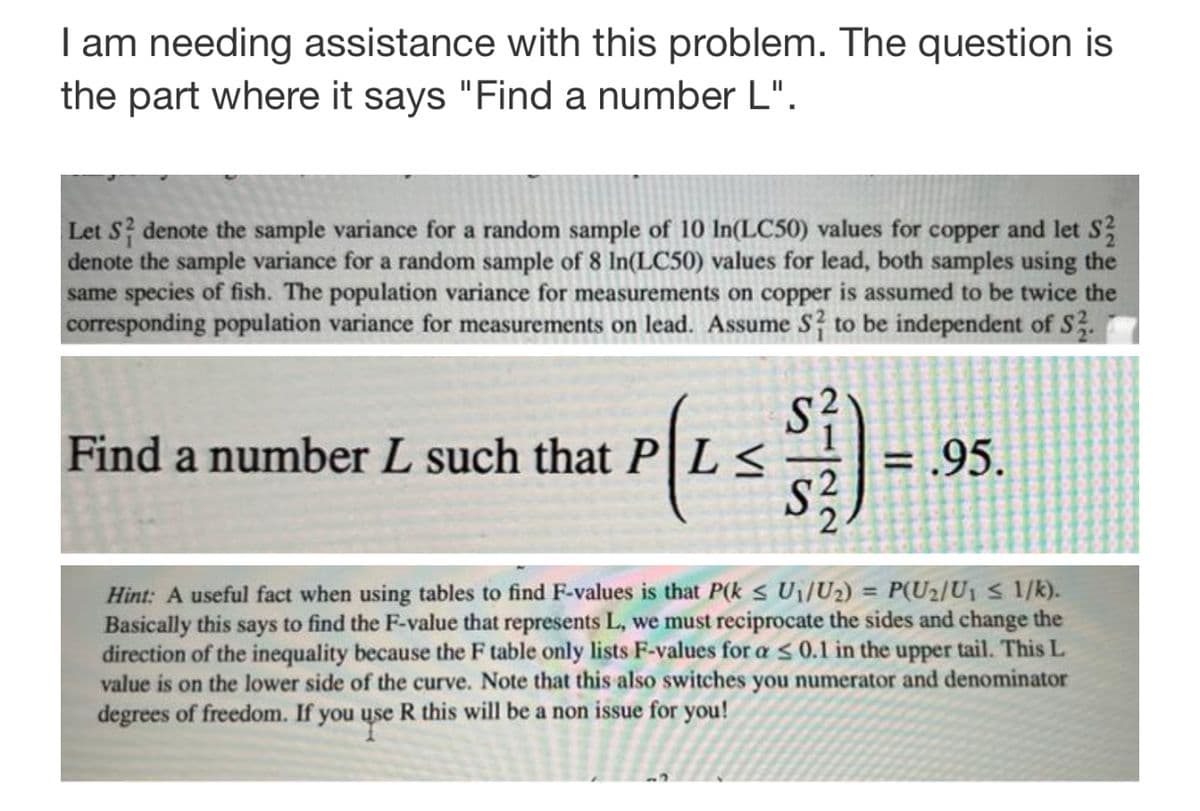Find a number L such that P|L 95. %3D Hint: A useful fact when using tables to find F-values is that P(k s U\/U2) = P(U2/U1 < 1/k). Basically this says to find the F-value that represents L, we must reciprocate the sides and change the
Find a number L such that P|L 95. %3D Hint: A useful fact when using tables to find F-values is that P(k s U\/U2) = P(U2/U1 < 1/k). Basically this says to find the F-value that represents L, we must reciprocate the sides and change the
Glencoe Algebra 1, Student Edition, 9780079039897, 0079039898, 2018
18th Edition
ISBN:9780079039897
Author:Carter
Publisher:Carter
Chapter10: Statistics
Section10.4: Distributions Of Data
Problem 19PFA
Related questions
Question

Transcribed Image Text:I am needing assistance with this problem. The question is
the part where it says "Find a number L".
Let S? denote the sample variance for a random sample of 10 In(LC50) values for copper and let S3
denote the sample variance for a random sample of 8 In(LC50) values for lead, both samples using the
same species of fish. The population variance for measurements on copper is assumed to be twice the
corresponding population variance for measurements on lead. Assume S? to be independent of S.
Find a number L such that PL<
= .95.
Hint: A useful fact when using tables to find F-values is that P(k s U\/U2) = P(U2/U1 s 1/k).
Basically this says to find the F-value that represents L, we must reciprocate the sides and change the
direction of the inequality because the F table only lists F-values for a s 0.1 in the upper tail. This L
value is on the lower side of the curve. Note that this also switches you numerator and denominator
degrees of freedom. If you use R this will be a non issue for you!
Expert Solution
This question has been solved!
Explore an expertly crafted, step-by-step solution for a thorough understanding of key concepts.
This is a popular solution!
Trending now
This is a popular solution!
Step by step
Solved in 2 steps with 2 images

Recommended textbooks for you

Glencoe Algebra 1, Student Edition, 9780079039897…
Algebra
ISBN:
9780079039897
Author:
Carter
Publisher:
McGraw Hill

Glencoe Algebra 1, Student Edition, 9780079039897…
Algebra
ISBN:
9780079039897
Author:
Carter
Publisher:
McGraw Hill